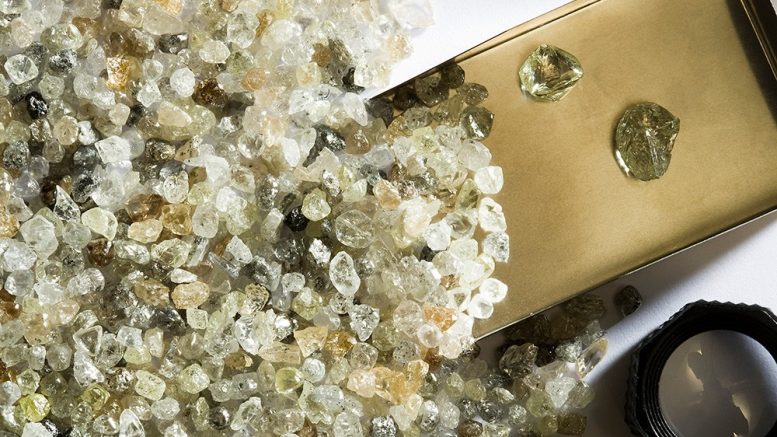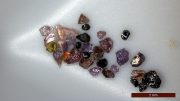Suddenly, diamonds are looking interesting again. The cutbacks in diamond production last year, allied to the substantial fall in manufacturing capacity in India (the major diamond cutting centre) as a result of the Pandemic, against continuing strong retail demand for diamond jewellery has cleared out the billions of dollars of rough and polished inventory overhang in the mid-stream. No new obvious sources of supply whilst demand continues to be strong and for the first time in more than a while, rough and polished diamond prices are rising strongly.
So why aren’t a wave of early investors pouring into diamond stocks? Why aren’t the bars around Bay Street abuzz with talk of new diamond investments? Only five years ago, the combined market capitalisation of the larger Canadian diamond miners — Dominion Diamond Mines, Mountain Province Diamonds and Stornoway Diamonds — was $2.8 billion. The answer is that while diamonds may have been “a girl’s best friend” for Marilyn Monroe, if you were an investor in the diamond mining space, it’s been anything but fun, in fact for many it turned into a nightmare. What did investors miss? This is an incredibly important question to answer if they are not to make the same mistake again.
The first point is a macro one, which was beyond any investor’s control. From mid-2011 until the middle of last year we had been in a bear market for diamond prices. But since August last year polished diamond prices are up around 12%, and by many accounts are continuing to rise. Diamonds are a complicated business; the market lacks transparency, ore bodies aren’t uniform and rough diamond pricing is opaque, so more than almost any other resource sector, the pricing framework needed to be accurate. It wasn’t.
How so? Well let’s take the gold industry. The gold price on June 9 was around US$1,890 per ounce. How many gold companies do you know that would today value a new project using a long-term price of US$1,890 per ounce? None that I know of. Most would use between US$1,300 and US$1,600 per ounce. The price of copper on June 9 was around US$9,980 per tonne. Does that mean that many copper companies valuing a new project today would use US$9,980 per tonne for their long-term price forecast? I think not. Most would use between US$6,000 and US$7,000 per tonne. And they don’t escalate future prices in real terms, however much it makes a deposit more attractive. Why? I doubt many investors would stand for it.

Workers at Stornoway Diamond’s Renard diamond mine in Quebec. Credit: Stornoway Diamond.
So what is it about diamonds that no one questions when a diamond mining company uses the spot diamond price as the basis for valuing a new project (especially when so many companies have got that wrong)? Why does no one question a diamond mining company when it escalates future real diamond prices to justify a new project? Diamond prices don’t always go up. In fact, they often go down. Escalate future base metal or gold prices for many currently uneconomic deposits by between 2-4% in real terms and I have little doubt you can make them economic. But at what risk? Diamond prices may go up or down by as much as 50% in an economic cycle, but over the long-term there is no historical precedent for using real rising prices over the long-term, unless you carefully choose your start date to suit your story. And escalating diamond pricing by 2.5% per year is already building into the valuation a 28% rise in diamond prices over 10 years — so on a risk reward basis, that’s a lot of upside already priced in.
Case in point: Back in 2011 Stornoway Diamonds forecast an average diamond price of US$182 per carat with a net present value for the Renard diamond mine of $391 million. In 2014 that price forecast had risen to US$190. In July of that year Orion Mine Finance and Caisse de Depot provided US$250 million of financing in return for a stream of 20% of the diamonds at US$56 per carat. That is, they would pay US$56 for each carat that they could sell for US$190. By 2016, the forecast net present value had risen to $974 million with future real diamond prices being escalated by 2.5% a year. At the first sale in November 2016, Stornoway announced they had achieved a price of US$195 per carat, but added that they didn’t sell a portion of cheaper goods. Things couldn’t have looked better. For fiscal year 2017, they achieved US$85 per carat. Why? They recovered fewer large diamonds than they expected and had an unexpected level of breakage in those they did recover. But that’s not the point. They used what they believed to be the spot diamond price, and then escalated it. In simplistic terms, based on their then mineral reserve of 17.9 million carats, that is a difference (using un-escalated future diamond pricing) of US$1.8 billion in revenue. Game changer. From a high of around $1.60 a share in 2011, by the end of 2019 (pre-Pandemic) the shares were trading at round 2¢.

Rough diamonds mined from the Ekati mine in the Northwest Territories. Credit: Dominion Diamond.
Another case in point: In 2013, Dominion Diamond purchased a controlling stake in the Ekati diamond mine for US$553 million. The gravy in the deal was the (4 carats per tonne) Misery Main pipe. At the time of the purchase and based on BHP’s price book, Misery’s diamonds were worth US$112 per carat, meaning the ore body was worth a staggering US$448 per tonne. Based on Dominion Diamond’s February 2016 price book, those diamonds were repriced as US$75 per carat, a year later they were down to US$63 per carat (on a like for like basis). Using back of the envelope numbers, that’s US$588 million of expected revenue (and that’s without escalating future diamond prices) that’s gone up in smoke. Why? The market for these types of diamonds weakened. Maybe that was unforeseeable, but what is very difficult to justify is why both the company and many analysts were still escalating future diamond prices by 2.5% a year. If you ran the financial model provided in the March 2015 Ekati 43-101, using a 2.5% real diamond price escalation rate, Ekati had a value of $1.5 billion. Great purchase! But if you don’t escalate diamond prices then the number falls to $890 million. Try getting the numbers for the Jay Pipe to work without escalating diamond prices. They don’t. Dominion shareholders got partially rescued in 2017 by a bid from a private company in the U.S. with no previous expertise in diamonds. Dominion went into administration early last year and the bondholders who provided financing lost almost everything.
I could go on about diamond pricing and escalating future diamond prices, and the impact on other (not just Canadian) diamond mining companies, but hopefully the point is made. Don’t escalate future diamond prices and be careful about diamond valuations. If diamond prices continue to rise (which they may well do), you’ll be in a very good place, and if they don’t, being cautious makes it much more likely you will keep your money.
When it comes to rough diamond pricing. Caveat very much Emptor.
Richard Chetwode runs a diamond consultancy business. He is also chairman of Namibian Diamond Mining Company Trustco Resources, is chairman of the Advisory Board of Australian technology company Fine Arts Bourse, and is a consultant to several diamond (and other) businesses. All the opinions in this article are his own.




Be the first to comment on "Rough diamond pricing: Learn the lessons of history or history will repeat itself"